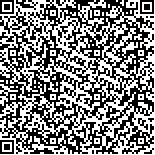|
| 1972-2021年启东市肝癌发病年龄-时期-队列趋势分析 |
| Analysis of Liver Cancer Incidence in Qidong from 1972 to 2021 Using an Age-Period-Cohort Model |
| 投稿时间:2024-02-19 修订日期:2024-03-28 |
| DOI: |
|
 |
| 中文关键词: 肝癌 发病率 趋势 年龄-时期-队列模型 启东 |
| 英文关键词:liver cancer incidence trend age-period-cohort model Qidong |
| 基金项目:国家自然科学基金项目(面上项目,重点项目,重大项目) |
|
| 摘要点击次数: 90 |
| 全文下载次数: 0 |
| 中文摘要: |
| [目的] 分析江苏省启东市1972-2021年全人群肝癌发病变化趋势,评估其年龄、时期和队列效应。 [方法] 从启东市癌症登记病例数据库中提取1972-2021年肝癌发病登记资料,计算粗发病率(CR)、世界人口标化率(WASR)和平均年度变化百分比(AAPC)。采用年龄-时期-队列模型分析启东市1972-2021年肝癌发病率的年龄、时期和队列效应。[结果] 启东市1972-2021年50年期间共计发生肝癌36,127例,WASR从1972-1981年的56.93/10万下降至2012-2021年的29.87/10万。其中男性发生肝癌26,710例, WASR从1972-1981年的91.06/10万下降至2012-2021年的44.27/10万;女性发生肝癌9,417例,从1972-1981年的26.28/10万下降至2012-2021年的16.21/10万。50年WASR的AAPC值为-1.47%(男性-1.67%、女性-1.02%)(均P <0.001)。净漂移值为-2.65%(男性-2.95%、女性-2.10%),均呈下降趋势;局部漂移表现为15~59岁年龄组(男性15~64岁、女性15~54岁)呈下降趋势。年龄效应表现为男性曲线为双峰型,第一峰在45-49岁年龄组(发病率为216.35/10万),第二峰在80-岁年龄组(发病率为186.35/10万);女性为单峰型,最高峰在75-79岁年龄组(发病率为108.75/10万)。时期效应以1992-1996年为参考组,1972-1976年RR值为2.10(男性2.20,女性1.99),后逐渐下降,至2017-2021年至最低点,RR值为0.50(男性0.46,女性0.62)。出生队列效应以1952-1956年出生为参考组,1932-1936年为最高点,RR值为1.18(男性1.21,女性1.15),后逐渐下降,至1982年后出生一直处于低位。APC模型的Wald χ2检验结果显示,合计、男性和女性的肝癌发病风险的年龄效应、时期效应和出生队列效应趋势变化差异均具有统计学意义(均P <0.001)。[结论] 启东肝癌发病率下降趋势明显,年龄、时期和队列均是影响启东肝癌发病的主要因素,老年人群及男性中年人群是肝癌防控重点关注对象,同时需继续监测肝癌发生的高危因子。 |
| 英文摘要: |
| [Purpose] To analyze the changing trend of liver cancer incidence in the entire population from 1972 to 2021 in Qidong City, Jiangsu Province, and to evaluate its age, period and cohort effects. [Methods] The crude incidence rate (CR), age-standardized incidence rates by the world population (WASR) and average annual percentage change (AAPC) were calculated using the liver cancer registration database of Qidong City during 1972-2021. An age-period-cohort model was used to analyze the age, period and cohort effects on liver cancer incidence. [Results] A total of 36,127 cases of liver cancer occurred in Qidong City from 1972 to 2021. The WASR decreased from 56.93/105 in 1972-1981 to 29.87/105 in 2012- 2021. Among them, 26,710 cases of liver cancer occurred in males, with WASR decreasing from 91.06/105 in 1972-1981 to 44.27/105 in 2012-2021. For 9,417 female cases, WASR decreased from 26.28/105 in 1972-1981 to 16.21/ 105 in 2012-2021. The AAPC of WASR over 50 years was -1.47% (-1.67% for males and -1.02% for females) (Ps<0.001 for all). The net drift value was -2.65% (-2.95% for males and -2.10% for females), indicating decreasing trends. Similarly, the local drift showed downward trends in the age group of 15-59 years (15-64 years for males and 15-54 years for females). Age effect: for males, there was bimodal peak, in the first at the 45-49 age group (incidence of 216.35/105), and the second at the 80-age group (incidence of 186.35/105). There was a unimodal peak in the 75-79 age group (incidence 108.75/105) for females. Period effect: With 1992-1996 as the reference group, the rate ratio (RR) was 2.10 (2.20 for males and 1.99 for females) from 1972 to 1976, which then gradually decreased to its lowest point in 2017-2021, with a RR of 0.50 (0.46 for males and 0.62 for females). Birth cohort effect: With 1952-1956 as the reference group, the RR was 1.18 (1.21 for males and 1.15 for females) in 1932-1936, reaching its highest point, and then gradually decreased until the RR was at a low level for those born after 1982. Wald χ2 test results of APC model showed that the age, period and birth cohort effect trends of liver cancer incidence risk were statistically significant (P<0.001 for both sexes, males and females). [Conclusion] The incidence of liver cancer in Qidong has shown a significant decreasing trend. Age, period and cohort are the main factors affecting the incidence of liver cancer in Qidong. The elderly and middle-aged males are the primary focus for liver cancer prevention and control. It is necessary to continue monitoring emerging high-risk factors associated with the incidence of liver cancer. |
|
在线阅读
查看/发表评论 下载PDF阅读器 |
|
|
|